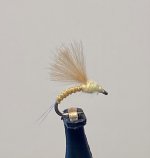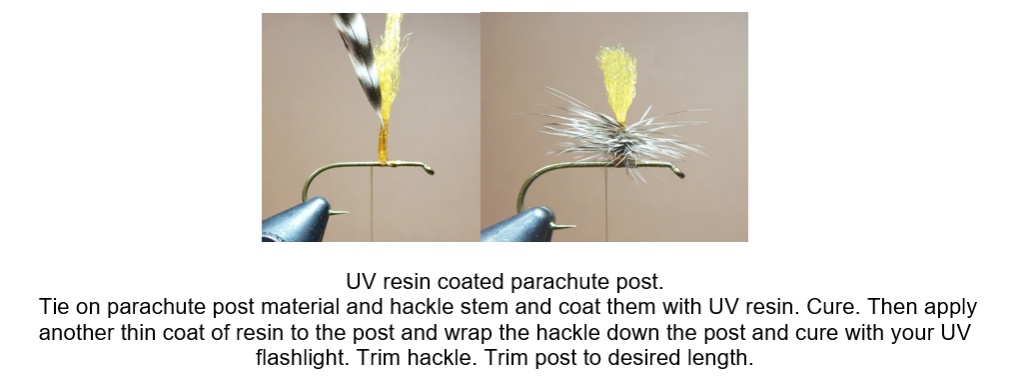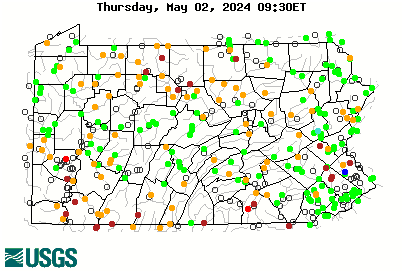I just cannot tie parachutes. Its gonna take me a long time, I've watched several videos and my dexteriority just isnt as good as the famous you tube tiers. Their concepts make sense, and there are many different techniques. I just cant tie parachute dry flies at this point. My post is too weak and I cannot tie off the hackle after I wrap it up the post about 10 times. Ill keep trying but for now Id like to explore other options.
Anyway, I was always told and always read that the reason for parachute style dry flies is to keep the body of the fly in the water, usually right below the meniscus or in the surface film. The other method is catskills style that keeps everything above the water. I can easily tie catskills style dry flies, no issues with that. But eventually I will have to figure out how to tie parachute styles.
In the meantime, is there any method (not parachute) that would mimic the same principles of a parachute dry fly, without having to actually tie a parachute post? AI was not helpful, and the only article I found was from the River Reporter who uses spinner wings and says it works the same for common patterns like the Hendrickson.
Thanks for any suggestions!
Anyway, I was always told and always read that the reason for parachute style dry flies is to keep the body of the fly in the water, usually right below the meniscus or in the surface film. The other method is catskills style that keeps everything above the water. I can easily tie catskills style dry flies, no issues with that. But eventually I will have to figure out how to tie parachute styles.
In the meantime, is there any method (not parachute) that would mimic the same principles of a parachute dry fly, without having to actually tie a parachute post? AI was not helpful, and the only article I found was from the River Reporter who uses spinner wings and says it works the same for common patterns like the Hendrickson.
Thanks for any suggestions!










